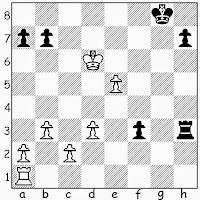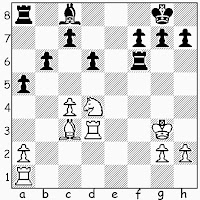Season's Greetings to the Jerome Gambit Gemeinde, and readers everywhere!
Below is my latest Jerome Gambit game, which includes the "gift" of annotations from the article submitted (and revised, and revised, and revised, and revised, and reassessed) to Stefan Bucker for his magazine Kaissiber. [There is a ton of interesting reading to be found in the above links - and the links below, as well - although I still have not been able to definatively link Alonzo Wheeler Jerome to Winston Churchill.]
perrypawnpusher - spince
blitz, FICS, 2013
1.e4 e5 2.Nf3 Nc6 3.Bc4 Bc5 4.Bxf7+
4...Kxf7 5.Nxe5+ Kf8
I have faced this defense 16 times, scoring 12 points - 75%, which is still a bit short of my overall Jerome Gambit score of 82% (regular Jerome Gambit 83%, Semi-Italian Jerome Gambit 90%, Italian Four Knights Jerome Gambit 74%, Semi-Italian Four Knights Jerome Gambit 77%).
As early as his first article with analysis (Dubuque Chess Journal 4/1874), Alonzo Wheeler Jerome considered the possibility that Black might refuse to capture the second piece, and play for King safety instead with 5...Kf8.
This was, in fact, the defense that Jerome, himself, credited to G. J. Dougherty, ("a strong amateur, against whom I first played the opening") of Mineola, New York, in a yet unfound game; that O.A. Brownson, editor of the Dubuque Chess Journal, played against Jerome in an 1875 game (Dubuque Chess Journal 3/1875); that magazine editor William Hallock used against D.P. Norton in an 1876 correspondence game played “by special request” to test the gambit (American Chess Journal 2/1877); that William Carrington tried in his 1876 match vs Mexican Champion Andres Clemente Vazquez (Algunas Partidas de Ajedrez Jugadas en Mexico, 1879); and which Lt. Soren Anton Sorensen recommended as “more solid and easier to manage” in his seminal Jerome Gambit essay (Nordisk Skaktidende 5/1877).
It is interesting that early in Jerome's Gambit's life, there were players willing to accept one "gift" but who were skeptical of accepting two "gifts".
6.Nxc6
Bill Wall has experimented with 6.Nd3 in Wall,B - Tim93612, Chess.com, 2010 (1-0, 36) and 6.0-0 in billwall - DeDrijver, Chess.com, 2012 (1-0, 20).
White also has the option of playing 6.Qh5, the Banks Variation, as in Banks - Re
Pete Banks ("blackburne" online), a stalwart member of the Jerome Gambit Gemeinde (and still the strongest player I know who has played the Jerome regularly over-the-board in rated contests), brought international attention to Alonzo Wheeler Jerome's invention by writing to International Master Gary Lane, who commented at length on the opening, and on a couple of Banks' games, in his March ("The Good Old Days") and April ("Chess Made Easy") 2008 "Opening Lanes" columns at ChessCafe.com. IM Lane also mentioned one of Banks' games in his The Greatest Ever chess tricks and traps (2008), which reprised some of the earlier material.
It is humorous to note that in his "Opening Lanes" column Lane wrote, after 5.Nxe5+, "I think anyone with good manners playing Black would now kindly ask their opponent if they wanted to take their move back" while in his book he changed this to "I think anyone with good manners playing Black would now go to another room to carry on laughing."
Apropos the Banks Variation itself (i.e. playing 6.Qh5 in response to 5...Kf8), IM Lane noted in "The Good Old Days" that "6...Qe7 is a good alternative [to 6...Qf6 of Banks - Rees], because it stops the checkmate and protects the bishop on c5."
A few months later, 6...Qe7 was tested successfully in a GameKnot.com game, splott - mika76, 2008: 1.e4 e5 2.Nf3 Nc6 3.Bc4 Bc5 4.Bxf7+ Kxf7 5.Nxe5+ Kf8 6.Qh5 Qe7 7.Ng6+ hxg6 8.Qxh8 Qxe4+ 9.Kf1 Qd4 10.Ke1 Qxf2+ 11.Kd1 d6 12.h3 Qxg2 13.Re1 Qf3+ 14.Re2 Bf2 15.d3 Nd4 16.Nc3 Qh1+ 17.Kd2 Nf3 checkmate. Clearly White, the very-slightly-higher rated player, was taken aback by the move. I asked mika76 if he had been influenced by IM Lane's recommendation, but he said he had come up with the move himself.
6...dc
Jerome, in his 1874 analysis, gave 6…bc 7.d4 “putting Black’s KB out of play”. This was supported by, among several games, perrypawnpusher - mika76, GameKnot.com, 2008 (1-0, 18)
[To Be Continued on New Year's Day.]
[Comments and Emails are Welcomed and Encouraged.]




















































